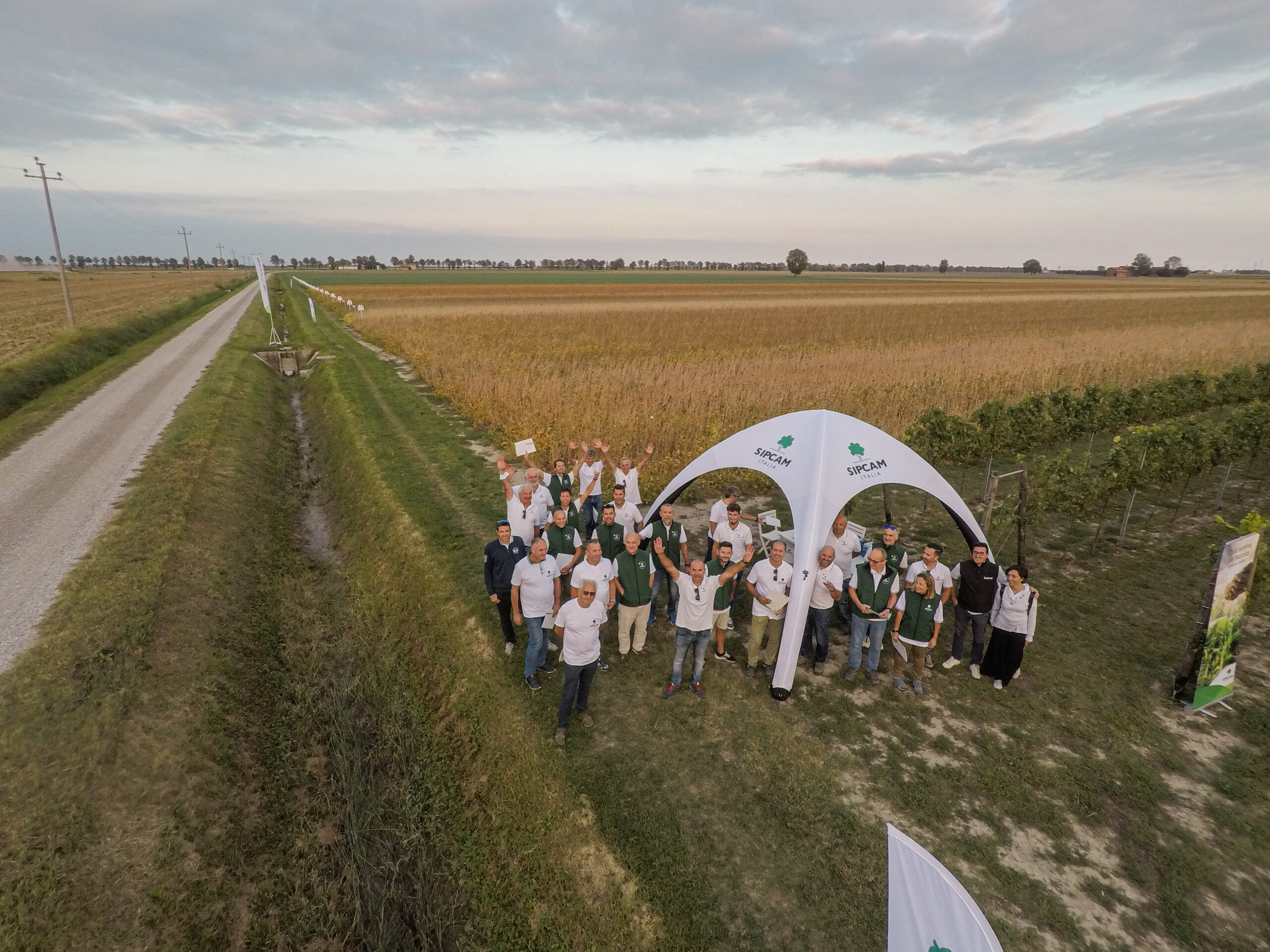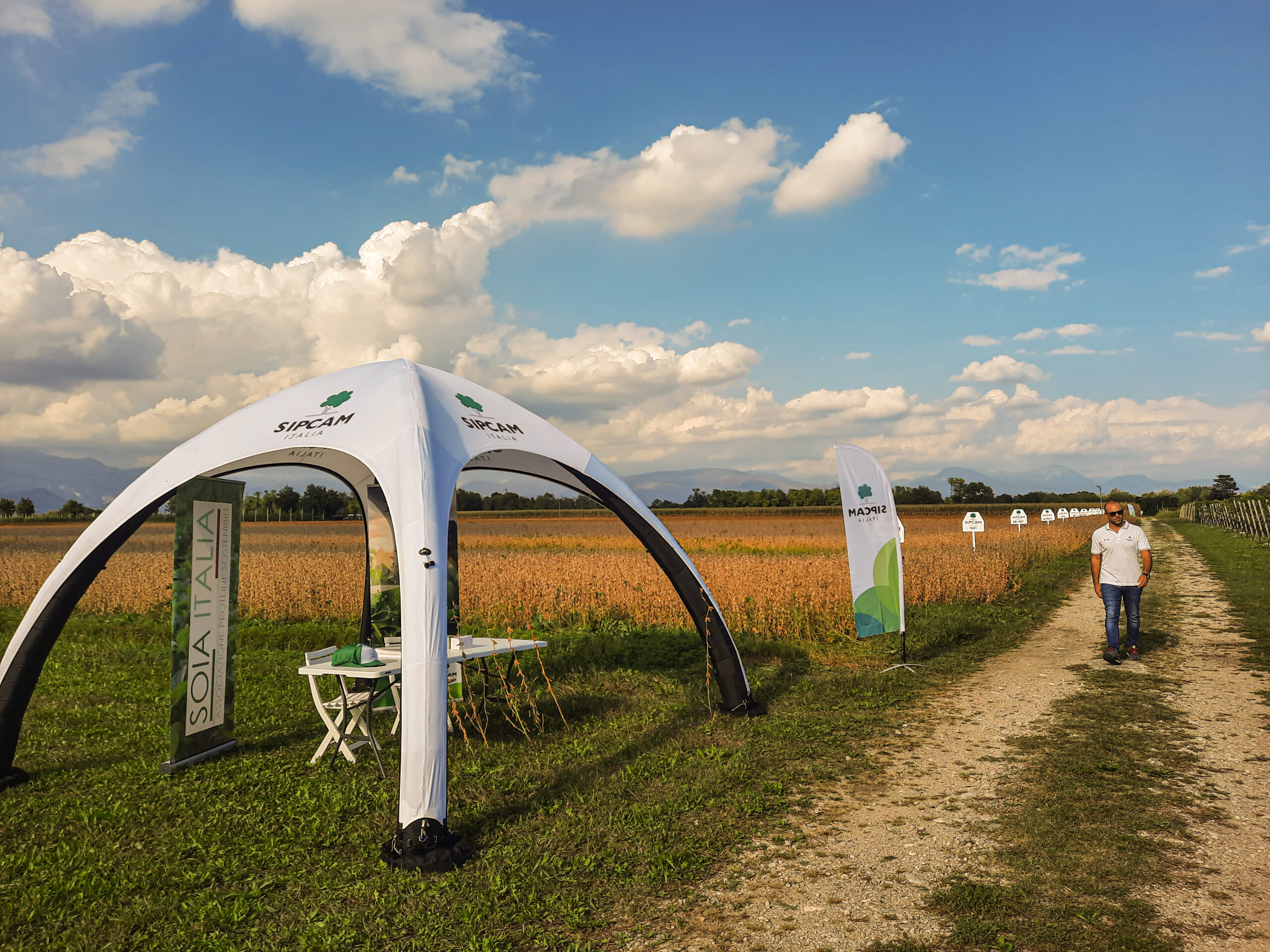The partnership between Sipcam Oxon and SOYLEIC will introduce the high-oleic soybean trait internationally and build the supply chain for soy.
Which came first, the chicken or the egg? What came first, supply or demand?
Since its origination, SOYLEIC has been driving demand as a heart healthy, non-GM viable protein source. Today, with growing popularity, SOYLEIC’s demand is outgrowing its supply. And, as population and awareness continue to grow, the demand will vastly increase.
In a first-of-its-kind collaboration, Missouri Soybeans and Sipcam Oxon decided to take another approach to the question, “What came first, supply or demand?” Sipcam Oxon is flipping the question on its head and asking what “should” come first, and to them the answer is supply.
With that forethought, the Missouri Soybean Merchandising Council’s efforts to grow farmers’ return on their soybean checkoff investments has taken another leap forward. In a cutting-edge partnership, Missouri Soybeans has teamed up with Sipcam Oxon to release the first commercial license of the innovative SOYLEIC trait outside of the United States to expand the supply chain.
SOYEIC is an excellent representation of Missouri soybean checkoff research at work. SOYLEIC is a non-GM, high-oleic soybean trait that was patented for use through checkoff funded research. When innovation collides from the cross of two soybean varieties, researchers cannot always foresee how the genetics will combine to produce a new offspring, but by chance with history and knowledge of the parents, researchers found the “potential” of a novel situation and discovered SOYLEIC.
“When farmers think of the soybean checkoff, they should immediately have a vision of the crop growing green in the field. Every part of the soybean plant has been touched in some way by checkoff-funded research, and without research, yield would be abysmal,” says Bryan Stobaugh, Missouri Soybeans director of licensing. “Without these critical insights, farmers are looking at beans that are performance negligible, disease ridden and may not even germinate.”
The high-oleic soybean trait gives farmers the option of growing soybeans for specific markets. Today, the need for healthy soybean oil has never been greater, and now the traits to produce that oil are available domestically and internationally, thanks to this new partnership with Sipcam.

Sipcam Oxon, headquartered in Milan, Italy, is the first Italian multinational company and one of the world’s leading players in the agriculture sector. Founded in 1946, the company is present all over the world both commercially and industrially. It operates in synthesis, registration and development of active ingredients for crop protection products and chemical intermediates. Additionally, the company owns high expertise in formulation, production and distribution of agrochemicals, biostimulants and non-GM soybean seed.
“Sipcam has been developing soybeans with unique features — appreciated by farmers and processors — building high value supply chains,” says Piero Ciriani, Sipcam’s seed business manager.
"High-oleic soybeans represent a great opportunity to make a substantial step ahead in providing a healthier and more sustainable oil. Combined with good protein levels, high-oleic soybeans can generate multiple benefits to the food market and the environment, to meeting farmers’ and processors’ needs and the new European guidelines."
Like Sipcam Oxon, many other feed and food manufacturers are increasingly focused on the sustainability of their operations. SOYLEIC soybeans can fit into these companies’ sustainability practices and help them achieve their goals.
SOYLEIC is made from soybeans, grown with advancing sustainability practices. During the past 40 years, soybean farmers have reduced the energy it takes to raise a bushel of soybeans by 35%.
Soybean farmers are committed to raising a sustainable product and continuing to improve their practices to minimize the impact on the environment. SOYLEIC soybeans support farmers’ efforts to meet their 2025 goals to reduce land-use impact by 10 percent, decrease soil erosion an additional 25%, increase energy-use efficiency by 10% and lower total greenhouse gas emissions by 10%.
American soybean farmers are using precision agriculture to apply fertilizer only where it is needed; they are increasing soil health by minimizing tillage and adding organic matter to their fields; and farmers are increasing the biodiversity on their farms by incorporating protected acres for wildlife and native plants. Using SOYLEIC helps both farmers and companies, like Sipcam Oxon, meet sustainability promises to customers today and in the future.
Since the beginning of Sipcam Oxon, the main advantage of the organization is its proximity to the world of agriculture and the ability to understand and interpret the needs of customers, using that knowledge to improve, simplify and make the business in agriculture more economic, profitable and productive.
“We are working to involve our partners, farmers, collectors and feed and food processors to explore all the opportunities of the high-oleic soybeans,” says Ciriani. “The first goal is to enhance and transfer the quality and benefits of the high-oleic trait along the soy value chain. Our claim is to be a leader in innovation in the non-GM market to support a high-quality, competitive food chain to drive the consumer market.”
Consumers are increasingly concerned with knowing what’s in their food and where it originated. The identity-preserved systems that help SOYLEIC deliver performance and functionality also enable full traceability from farm to fork.
The discovery of a unique trait in a field of high-oleic soybeans led to the creation of SOYLEIC®. It was not created through gene editing or genetic engineering, making it a non-GM option for high-oleic soybeans. While scientists wholeheartedly agree that GMOs are safe for food use and consumption, consumers want to have choices when making food decisions.
SOYLEIC provides the European Union (EU) a viable non-GM option to remain competitive in the growing food and agriculture sector. SOYLEIC promotes the use of non-GM crops being grown in the EU, which gives Sipcam the opportunity to contract, grow and process SOYLEIC soybean products domestically. Soybean acres are not substantial in the EU, so the acres that are grown need to be planted with innovative technology that can deliver high-quality yields.
"With the growing population around the world, the use of a sustainable crop is pertinent to feed our families, friends and animals," Stobaugh says.
“SOYLEIC provides that sustainability, and Sipcam has seen the opportunity and seized it. This is a milestone for Missouri Soybeans as an innovation discovered in the public breeding sector from checkoff funded research.”
Additionally, high-oleic soybeans give the opportunity to regain soybean’s part of the oil market for consumption. High-oleic soybean oil carries a qualified Food and Drug Administration heart health claim recognizing that it can lower cholesterol and may reduce the risk of coronary heart disease. It also has lower saturated fat and three times the amount of beneficial monounsaturated fatty acids compared to conventional vegetable oils contributing to lower blood pressure and cardiovascular health.
The versatility and neutral taste of soybean oil made it one of the most popular vegetable oils used in food around the world. With bans and regulations around trans fats and partially hydrogenated oils, the introduction of high-oleic soybean oil is a welcomed addition to the food industry. SOYLEIC provides an ideal, easy to incorporate solution for shortenings without partial hydrogenation, eliminating the presence of trans fats. Soybean oil is recognized as a source of omega-3 polyunsaturated fatty acids. Soybean oil is non-allergenic when highly refined – as is common in most food manufacturing applications.
“Without research, education and promotion of our versatile crop would wain and not perform. We have so much to be proud of because of checkoff funded research that leads to yield and successes. Each time the checkoff collaborates on a project, there is a goal in mind that people have searched long and hard to find the future of soy,” says Stobaugh. “Every small item adds up in research, and the checkoff gives us the opportunity to compete, innovate, educate, research and promote one of the most versatile crops on the planet. It is amazing what one session of trial and error in the field can lead to — SOYLEIC.”
Prior to this international agreement, SOYLEIC varieties were available in 14 U.S. states.
“SOYLEIC meets the needs of both Sipcam Oxon and the EU to build and expand a supply chain for soy,” says
Ciriani. “We are proud to be the first international partner of SOYLEIC amplifying the supply of an innovative, high-quality seed to our farmers and consumers.”
So, what came first, the chicken or the egg? Actually, the protein found in the eggshell to make it hard is only found in the chicken. So, this means the chicken came first. Now you know!
Find out more about SOYLEIC at soyleic.com.



